Hisatsu-sen 肥薩線
This interesting line is operated today in three sections:
Section A: Yatsushiro to Hitoyoshi
Section B: Hitoyoshi to Yoshimatsu
Section C: Yoshimatsu to Hayato
Note: Destruction in heavy rain and flooding on July 4, 2020. Since then the complete sections Yatsushiro - Hitoyoshi - Yatake Pass - Yoshimatsu are closed.

Section A (51, 8 km) – from Yatsushiro on the southwestern coast of (mainland) Kumamoto prefecture along the Kumagawa river up to the town of Hitoyoshi (105, 7 m above sea level) at the western rim of the Hitoyoshi plateau. The JNR (and then JR Kyûshû) line formerly continued through the Hitoyoshi plateau as far as Yunomae near the foot of the impressive mountain range which forms the border with Miyazaki prefecture. In 1989 the line from Hitoyoshi to Yunomae (24, 8 km) became a third sector private railway, the Kumagawa Tetsudô. Express trains over section A of the Hisatsu-sen work to and from the city of Kumamoto.
The Hisatsu-sen is diesel operated and originally formed part of the mainline between north and south Kyûshû. The mainline along the coast (part of the Kagoshima Honsen) was not opened until 1927. Construction of section A to Hitoyoshi was completed in 1908, and today there are three express services (to and from Kumamoto) and a few local services at irregular intervals per day. In addition, there is one through service with tourist cars onto section B, and on specific days a steam train is run. In 1987 freight services over the entire Hisatsu-sen ended.
# The major bridges and other parts of section A were destroyed in heavy flooding on July 4, 2020. #
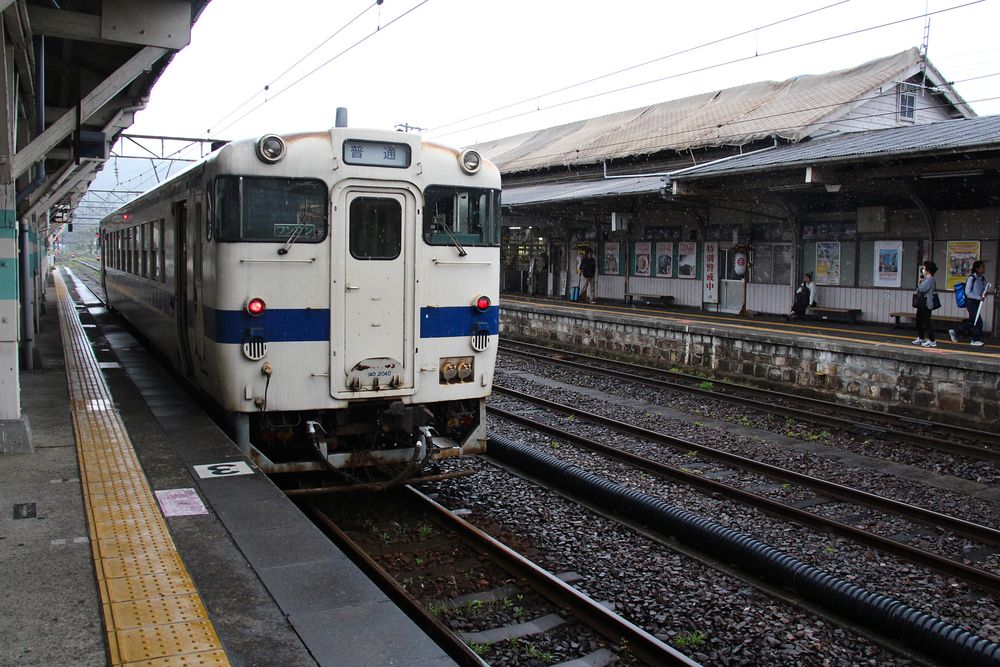
KIHA 140 2040 waiting to leave Yatsushiro for Hitoyoshi. Note the station roof damaged by a severe earthquake. (2016)
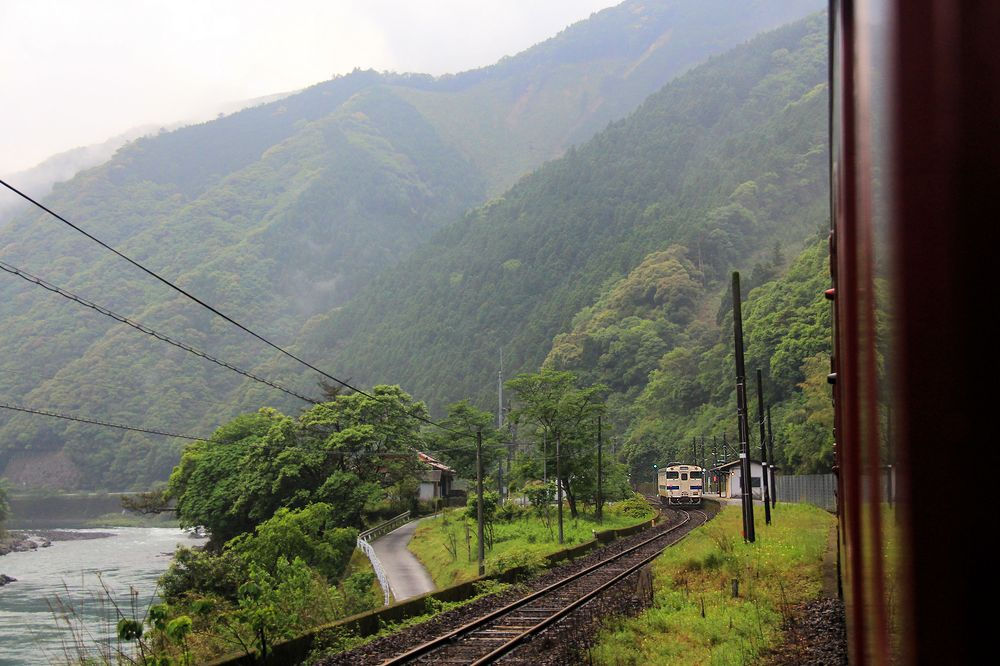
Setoishi halt with a local service formed by diesel car KIHA 140 2040. (2016)

Along the Kumagawa river. (2016)
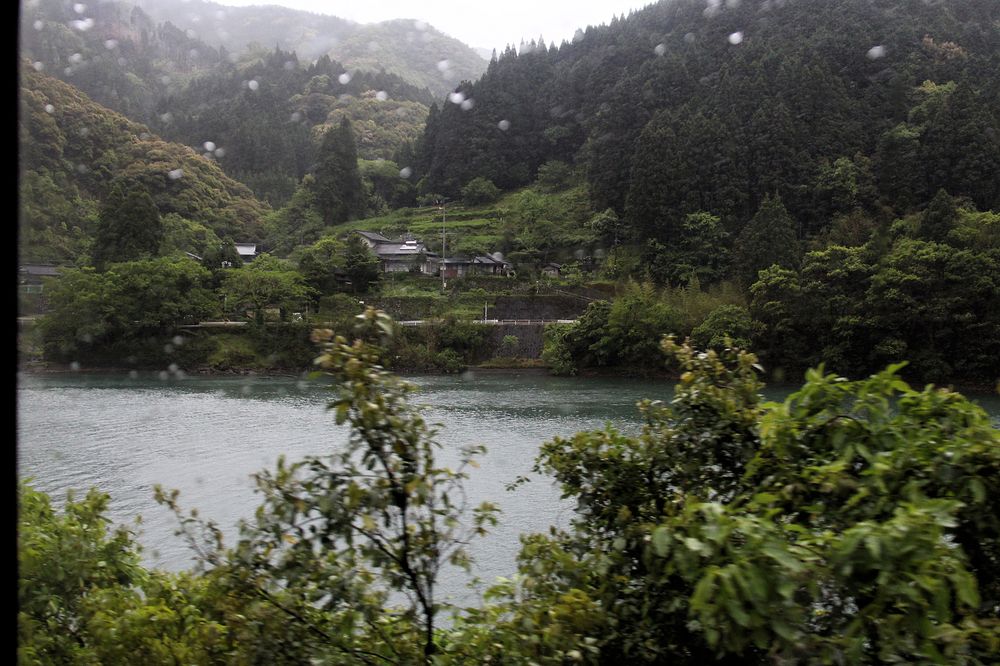
A settlement seen from the train near Yoshio, along the Kumagawa River. (2016)
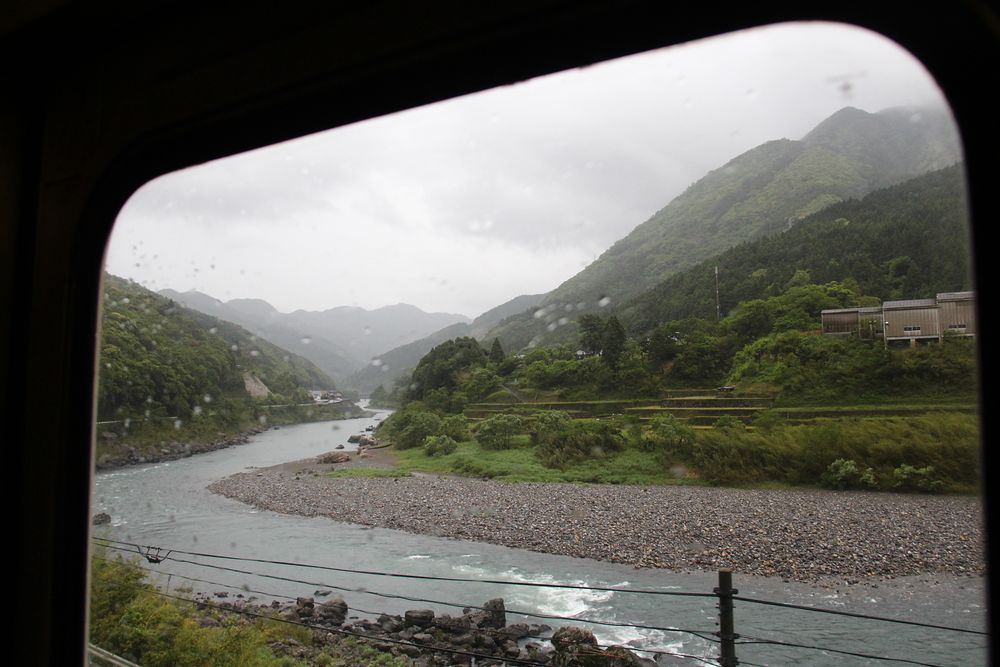
Looking down along the Kumagawa River near Shiroishi. (2016)
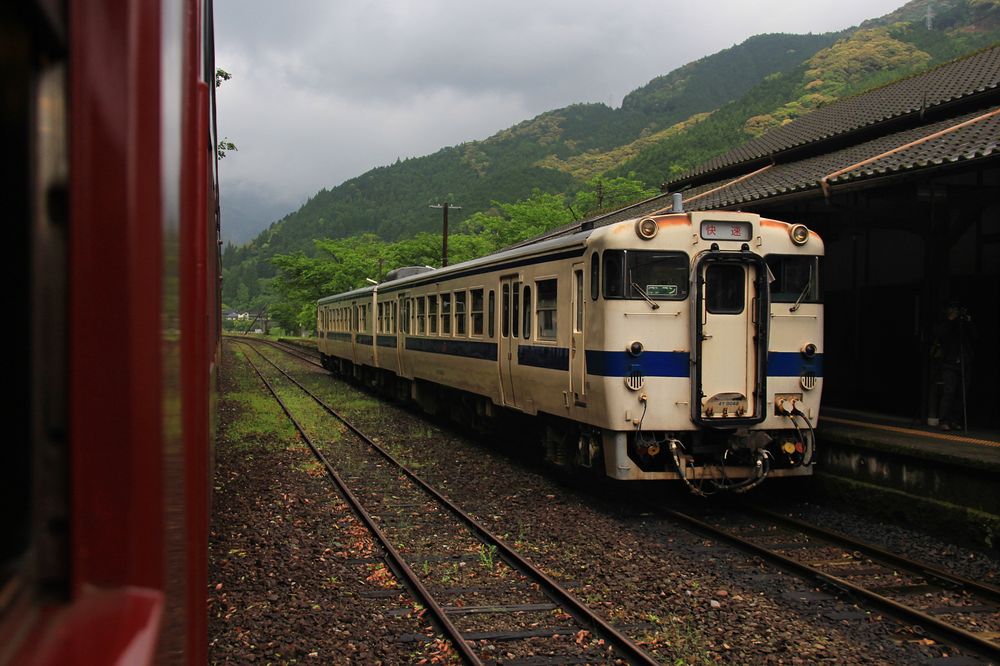
A stopping train, consisting of KIHA 47 9049 and KIHA 47 8158, at Shiroishi station. (2016)
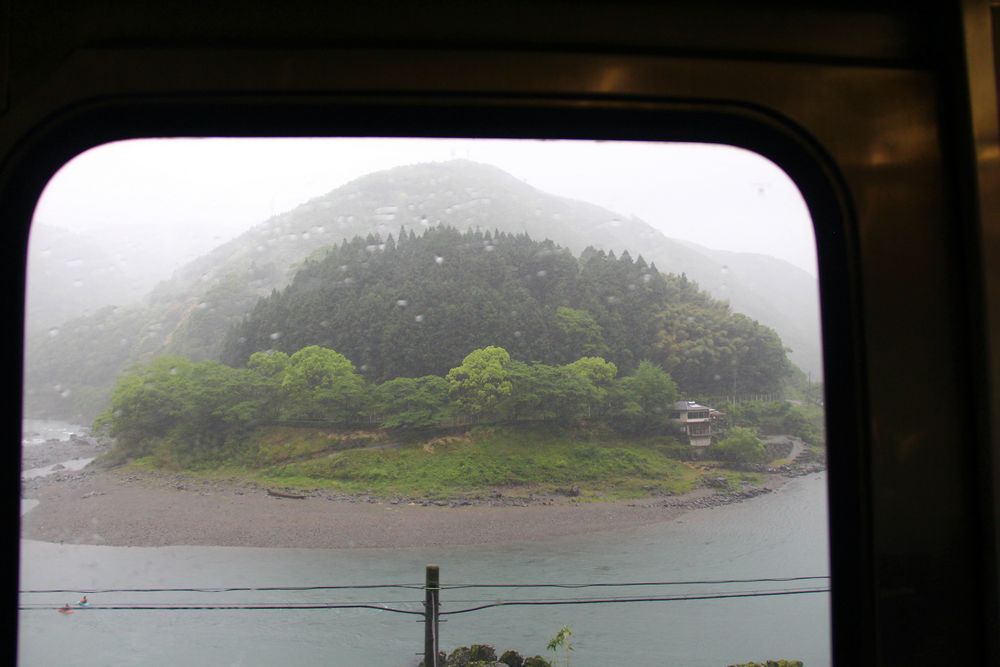
From the train near Naraguchi on the way down from Hitoyoshi. (2016)
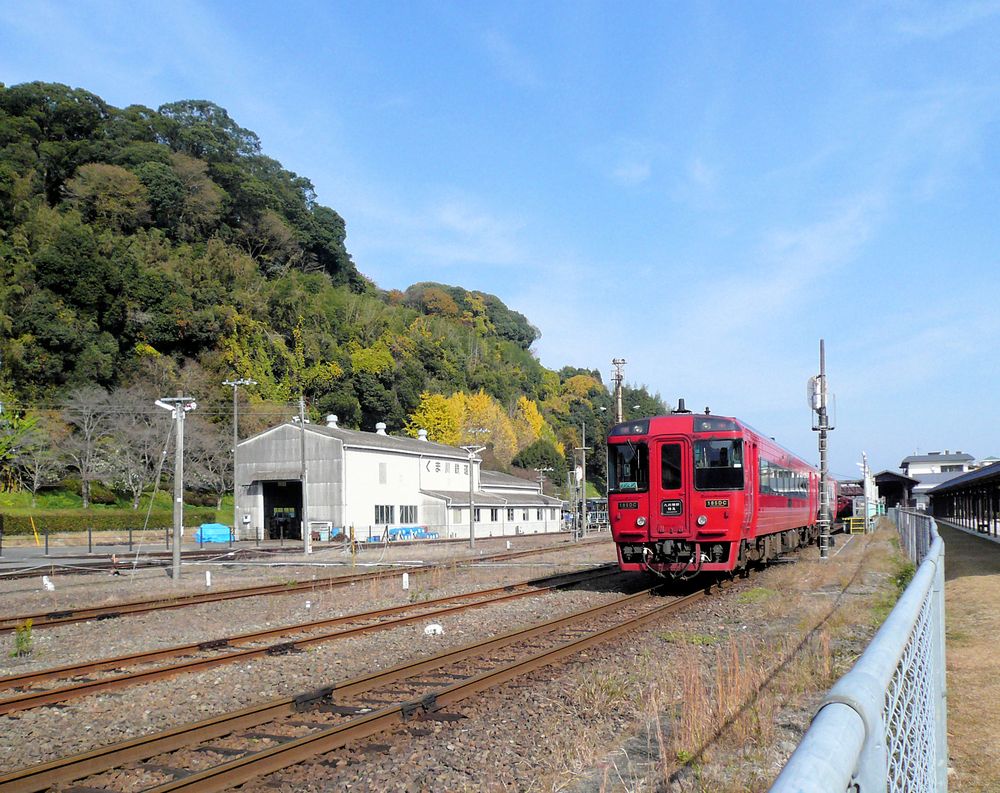
An intercity fast service from Kumamoto entering Hitoyoshi. Diesel cars KIHA 185-5 and KIHA 185-1001. (2010)

Steam locomotive 58654 on an excursion train at Hitoyoshi. (2016)
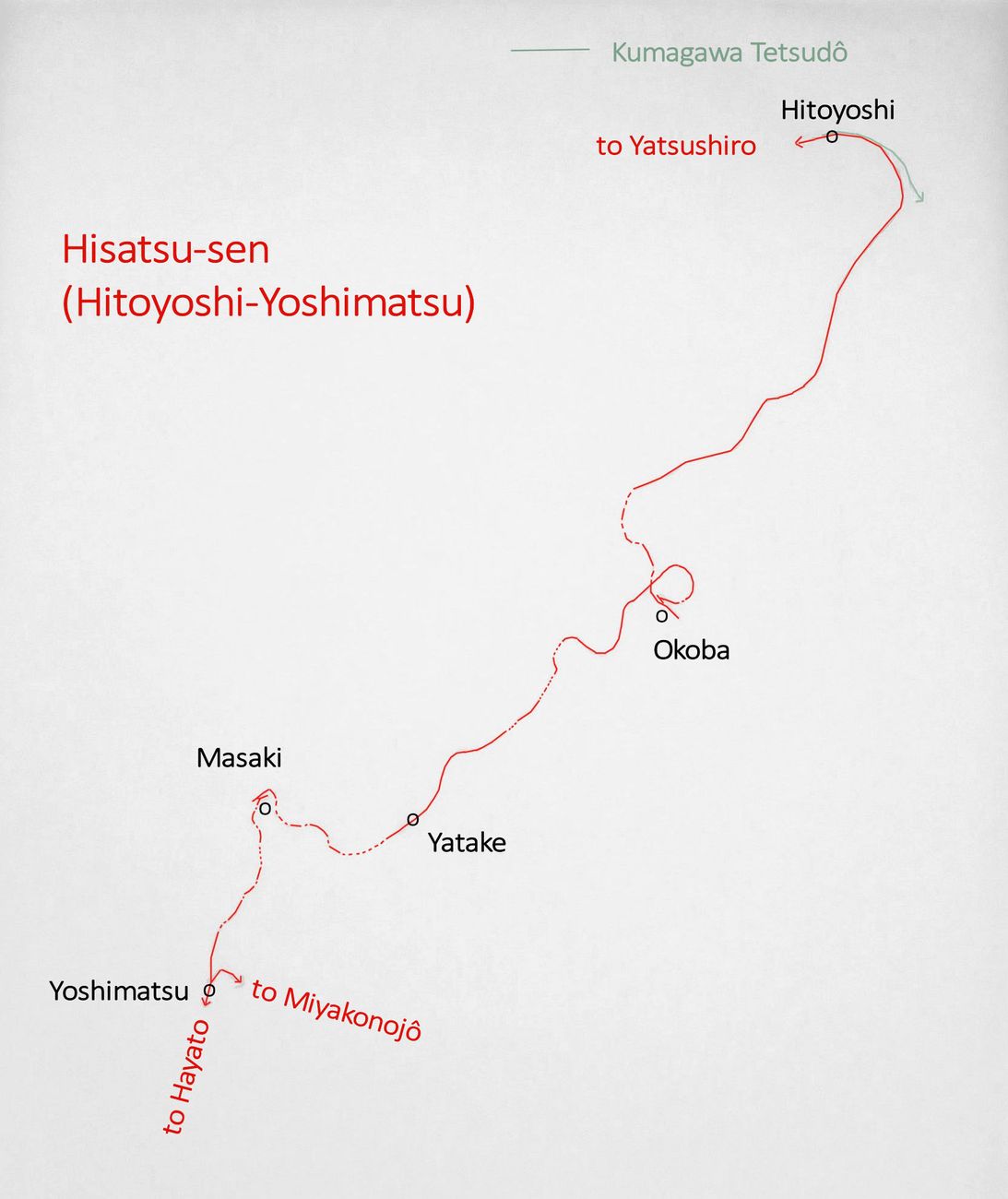
Section B (35 km) – the mountain route from Hitoyoshi over the pass to Yoshimatsu in Kagoshima prefecture. The highest point of the line is reached at Yatake (536, 9 m above sea level), from where trains pass through Yatake tunnel (2, 96 km) and then tackle the steep descent to Yoshimatsu (224 m above sea level).
Section B is famous for its two switchbacks and its loop line. The first switchback when travelling from north to south is reached at Okoba (10, 4 km from Hitoyoshi), where trains first reverse and climb up into the hills for a short distance, before reversing again and winding upwards on a 360 degree loop with impressive views over the Hitoyoshi plateau. After emerging from Yatake tunnel a breath-taking panorama of the Kirishima volcanic mountain range opens up as the train descends to Masaki (27, 2 km from Hitoyoshi). Masaki is reached after stopping slightly beyond the station and then running backwards down to the platform.
After Masaki follows the run to Yoshimatsu in the Ebino plateau. Actually there was no real need for the railway over section B after the 1970s, but as the line runs through some of the most magnificent scenery in Kyûshû and is also of high technical interest it has been retained as a tourist railway, operating with specially refurbished diesel cars. At present services consist of two tourist services (one to and from Kumamoto and one to and from Hitoyoshi), and one local train each way in the morning and evening.
Section B was built in 1909 and used as part of the north-south mainline until 1927. At Yoshimatsu it connects with the Kitto-sen (61, 6 km), running up from Miyakonojô along the north-eastern side of the beautiful Kirishima volcanoes.

Okoba switchback station with tourist train KIHA 140 2125 + KIHA 47 9082 + KIHA 47 8159. (2016)
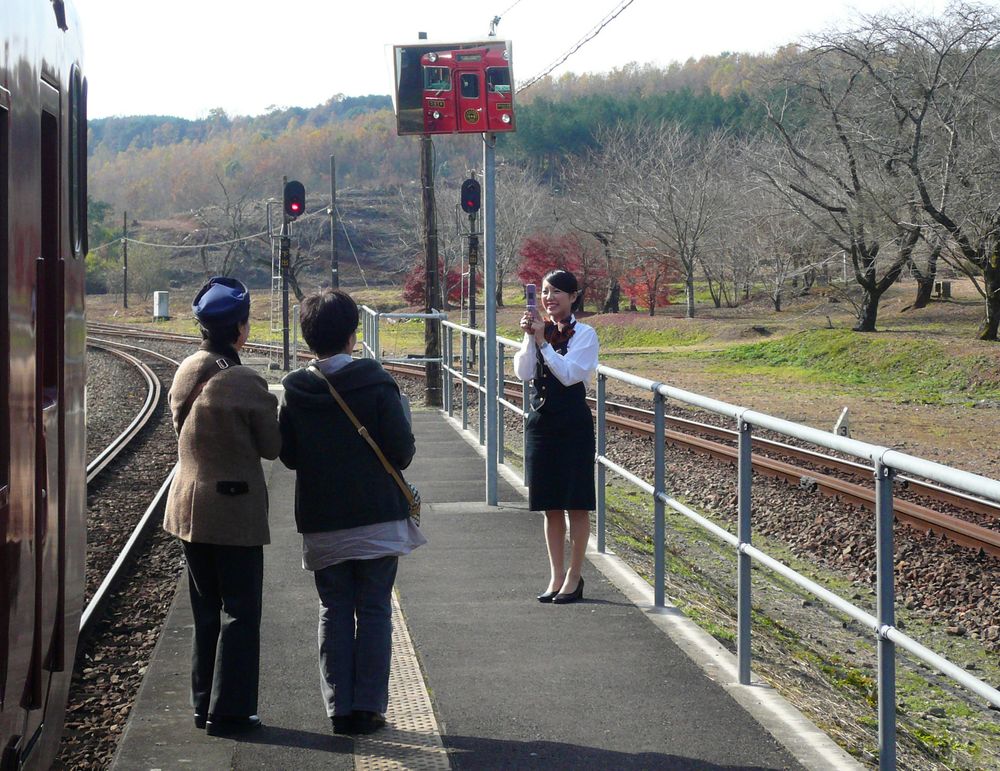
At Okoba station the train attendant takes photographs of the passengers. (2010)

Climbing up to Yatake summit with a view down on Okoba switchback station. (2016)

Yatake summit with a train specially refurbished for tourism (KIHA 47 8159 + KIHA 47 9082 + KIHA 140 2125). (2016)
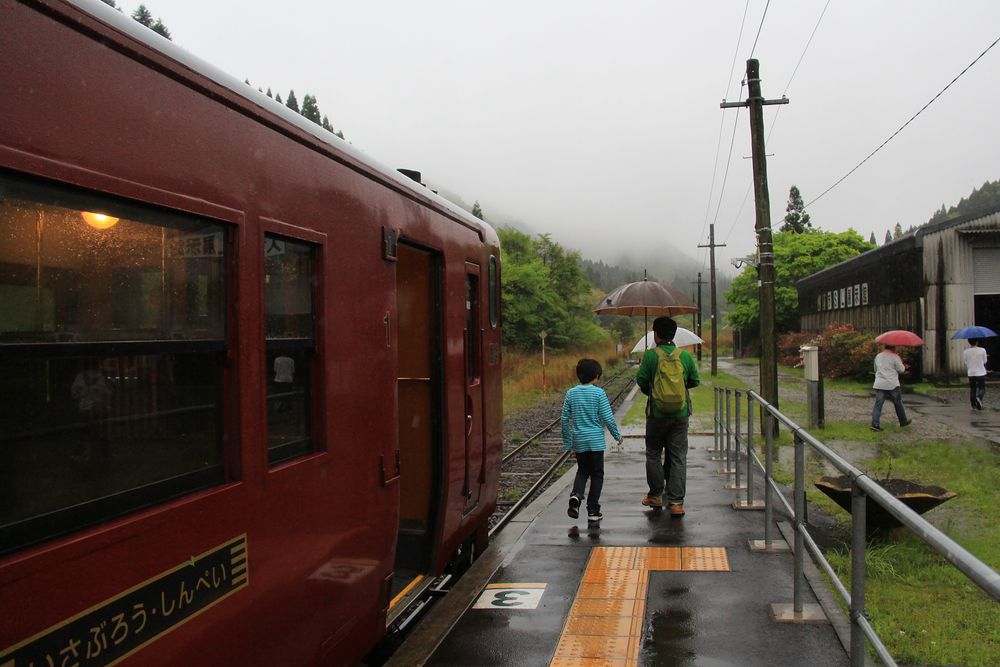
At Yatake summit there is a small railway museum which also contains a steam locomotive of class D51. (2016)

Yatake summit in autumn with two-car train KIHA 140 2125 + KIHA 47 8159. (2010)

On the descent to Masaki switchback station; view onto the Kirishima volcanic mountain range. (2010)

Looking down onto Masaki switchback station. (2016)
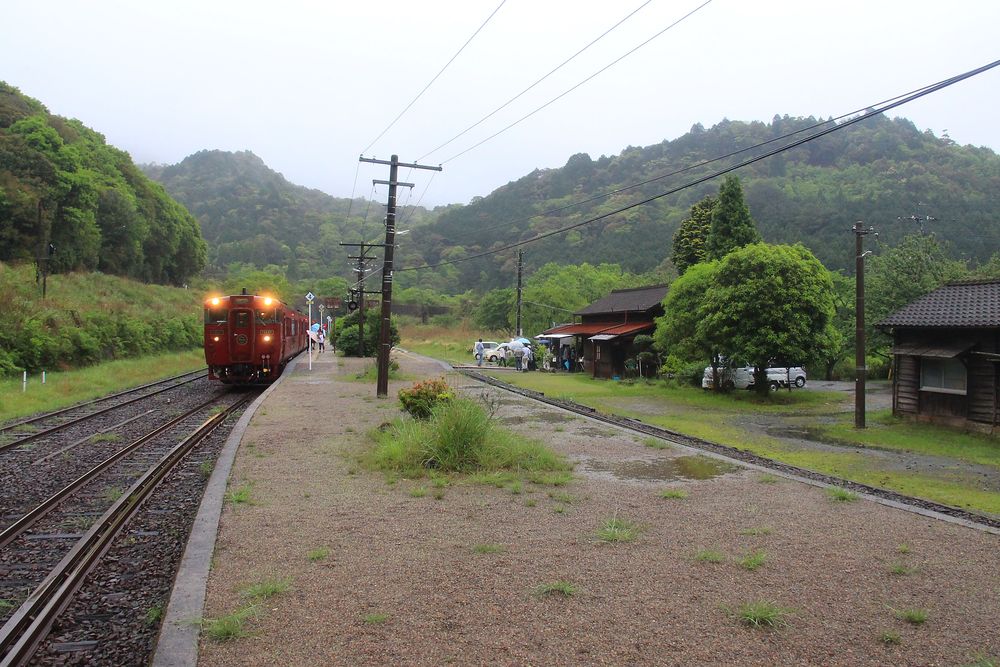
Masaki switchback station with tourist train KIHA 47 8159 + KIHA 47 9082 + KIHA 140 2125. (2016)
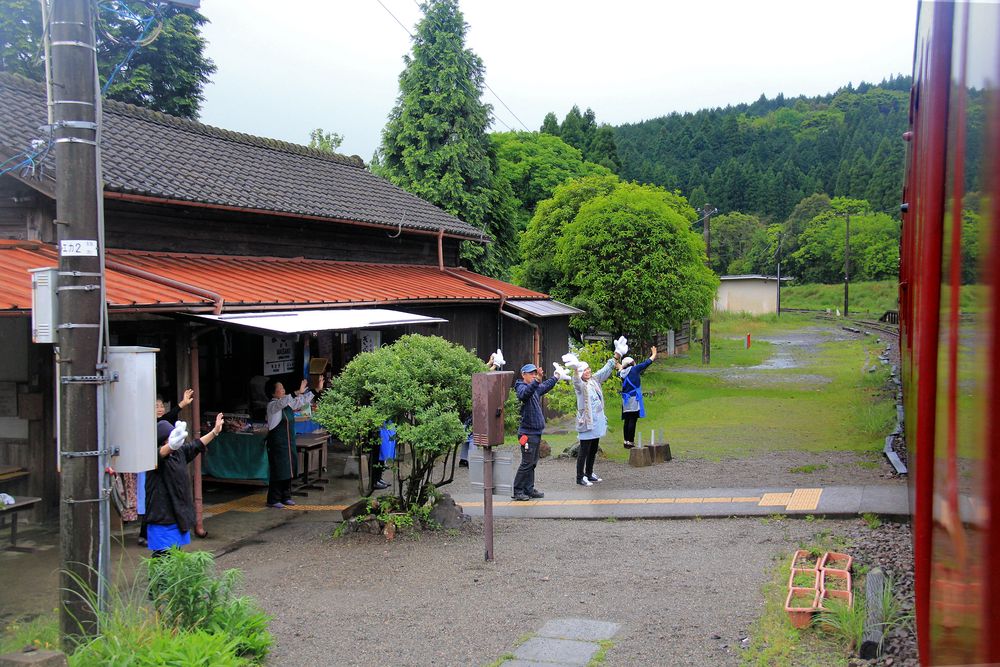
Leaving Masaki station the shop team waives good-bye to the train. (2016)

Section C (37, 4 km) serves the villages along the western side of the Kirishima mountain range, including the hot springs at Kirishima Onsen. The line descends from Yoshimatsu (224 m above sea level) to Hayato in Kagoshima Bay. The two express tourist trains a day, which connect with those on section B and also use specially refurbished diesel cars, continue from there to the city of Kagoshima. Besides these there are around a dozen local services.
Section C was built through from Kagoshima in 1903, and it was used by the trains to the north until the opening of the Kyûshû west coast line in 1927. At Kurino, 7,5 km south of Yoshimatsu, the Yamano-sen used to branch off and run down from the plateau via Satsuma Ôkuchi to the sea at Minamata (55, 7 km). The Yamano-sen, well-known for its impressive loop, closed to all traffic in 1988. A further branch (the Miyanojô-sen, 66, 1 km) served the mountainous region between Satsuma Ôkuchi and the city of Satsuma Sendai around 50 km north of Kagoshima, but closed completely in 1987.
***
The Hisatsu-sen takes its name from the two old provinces of Higo 肥後 (present-day Kumamoto prefecture) and Satsuma 薩摩 (the area dominated by the city of Kagoshima and forming the western part of present-day Kagoshima prefecture).

The black train, specially refurbished for tourism, at Yoshimatsu. Diesel cars KIHA 147 1045 + KIHA 47 8092. (2016)
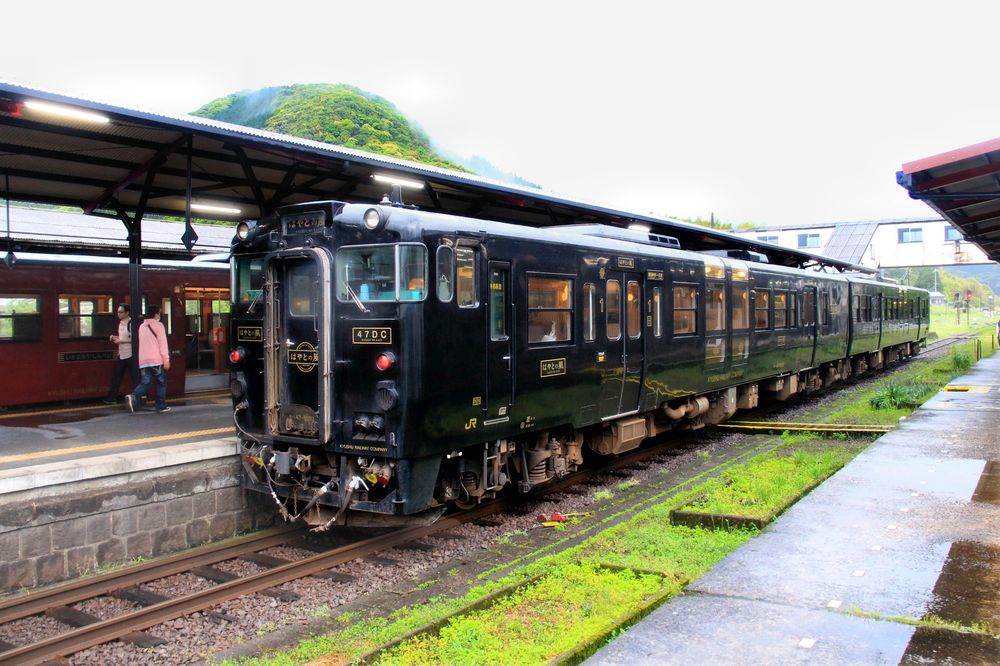
The black train (KIHA 47 8092 + KIHA 147 1045) at Yoshimatsu. (2016)
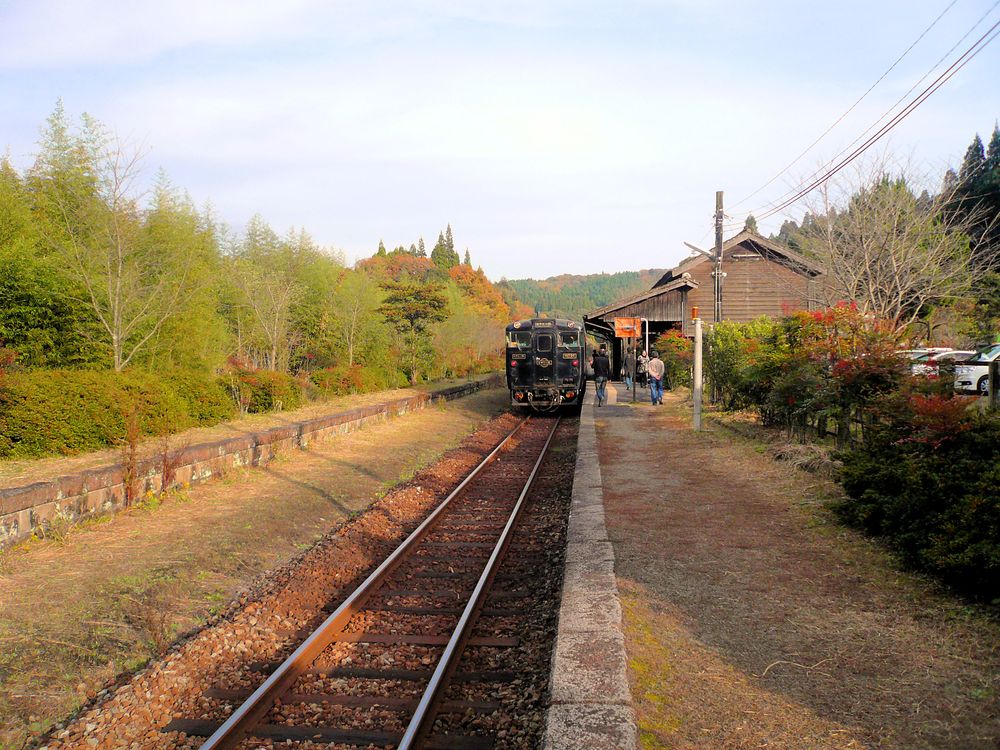
A train standing at Kareigawa with its historic station building. (2010)

